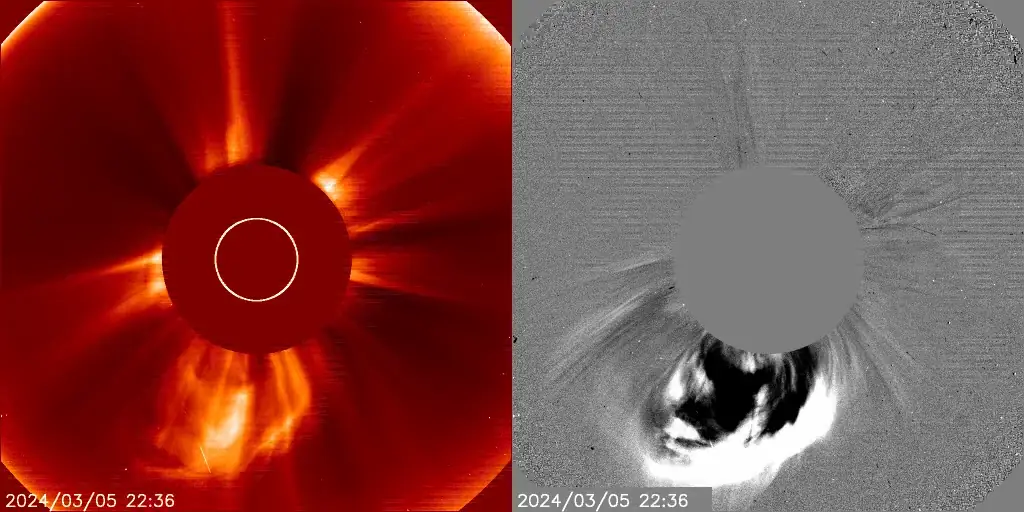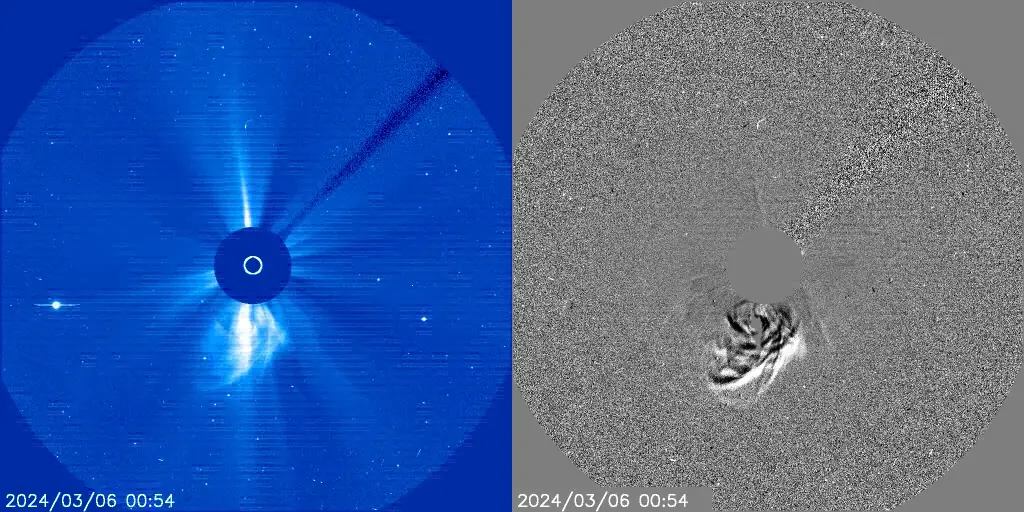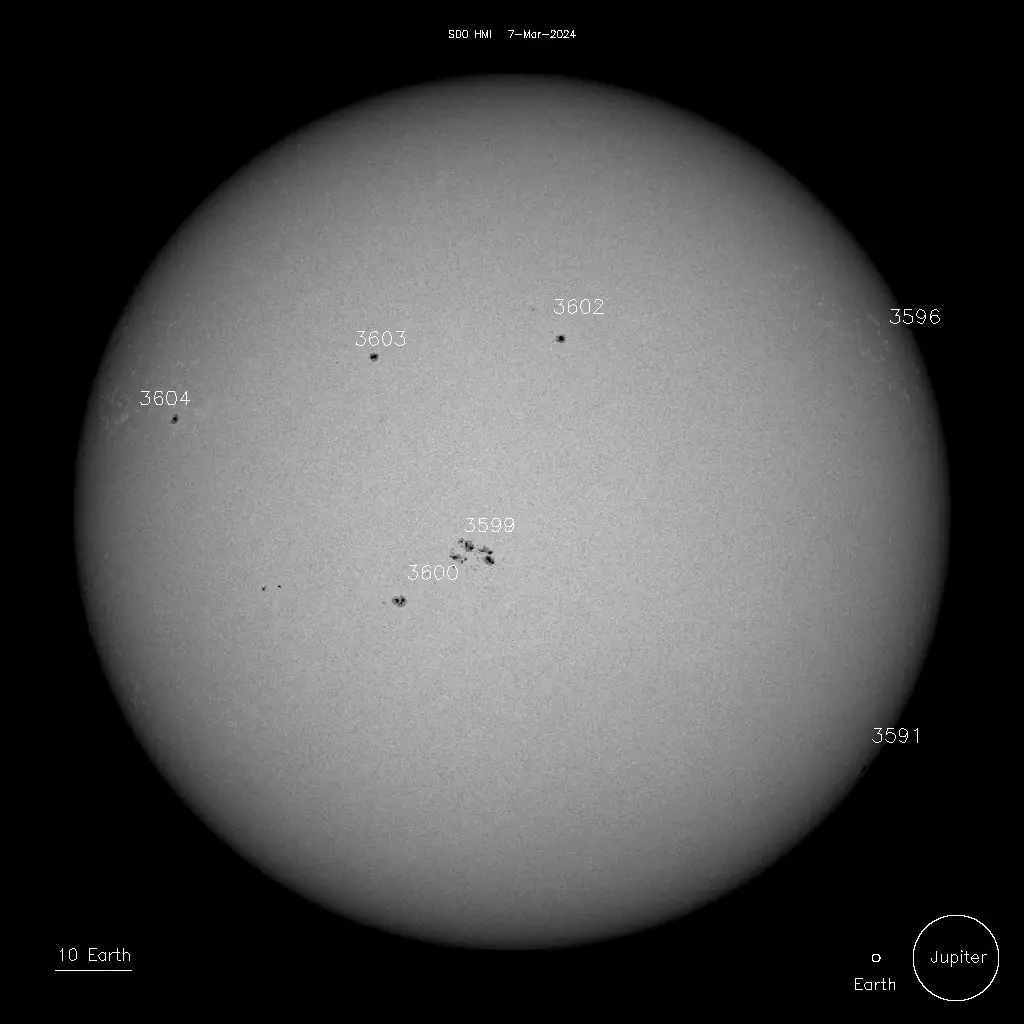A solar filament eruption centered near S35E50 took place around 20:00 UTC on March 5, 2024, producing a large coronal mass ejection (CME) which is expected to slightly graze Earth late March 8. G1 – Minor geomagnetic storms are possible on March 9 due to the combined effects of a negative polarity CH HSS and this CME.
The CME was observed in LASCO coronagraph imagery starting at 21:36 UTC. This event was analyzed and indicated most of the ejecta is likely south and behind Earth’s orbit. However, a portion of the ejecta could slightly graze the Earth late on March 8 into early March 9.



At around 10:00 UTC on March 6, a ~13 degree-long filament was observed lifting off from near the western limb. The analysis is underway, but due to the faint nature of this CME, there is low confidence in both the analysis and the likelihood much of the ejecta makes it to Earth.
Additionally, just after this eruption, a ~6 degree-long filament, centered near S21E01, disappeared from the disk. This filament is believed to have been reabsorbed into the corona and should not pose a threat to Earth.
Solar activity was at low levels in 24 hours to 12:30 UTC on March 7, with Region 3599 (beta-gamma) continuing to exhibit growth and increased activity. This AR produced several C-class flare with the largest being a C8.3 at 06:18 UTC today. Region 3603 (beta) picked up a weak trailer spot but remained inactive. The remaining regions exhibited stagnation and produced little activity.
The activity is expected to continue at low levels, with a slight chance for M-class flares through March 9.


Solar wind parameters were near background levels during the same period. Total field strength averaged near 6 nT, while Bz had minor southward deviations. Wind speeds hovered near 400 km/s. The phi angle was in a mostly positive orientation.
Enhancements in the solar wind environment are possible late on March 8 as a small, negative polarity coronal hole high speed stream (CH HSS) combines with the anticipated arrival of a CME produced by filament eruption on March 5.
The geomagnetic field was mostly quiet with an isolated unsettled period over the past 24 hours.
Looking ahead, quiet to unsettled conditions are expected through March 8, with a chance for isolated active periods later in the day. Conditions are expected to increase to unsettled to active levels, with likely periods of isolated G1 – Minor geomagnetic storming on March 9 as CME effects increase.
References:
1 Forecast discussions issued by SWPC on March 6 and 7, 2024
Featured image: CME produced by filament eruption on March 5, 2024, Credit: NASA SDO/AIA 304, NASA/ESA LASCO C2 and C3, Helioviewer, The Watchers.
Major X6.3 solar flare erupts from Region 3590
Thursday, February 22, 2024
Two X-class solar flares – X1.8 and X1.7 erupt from Region 3590
Thursday, February 22, 2024
Major X2.5 solar flare erupts from AR 3576, producing large CME
Friday, February 16, 2024
Three CMEs heading toward Earth, impact expected on February 13
Monday, February 12, 2024
Proton flux rising after powerful farside eruption, S1 – Minor solar radiation storm
Monday, February 12, 2024
M6.5 solar flare erupts from AR 3576, G2 – Moderate geomagnetic storm watch
Monday, February 12, 2024
Strong M9.0 solar flare erupts from geoeffective Region 3576
Saturday, February 10, 2024